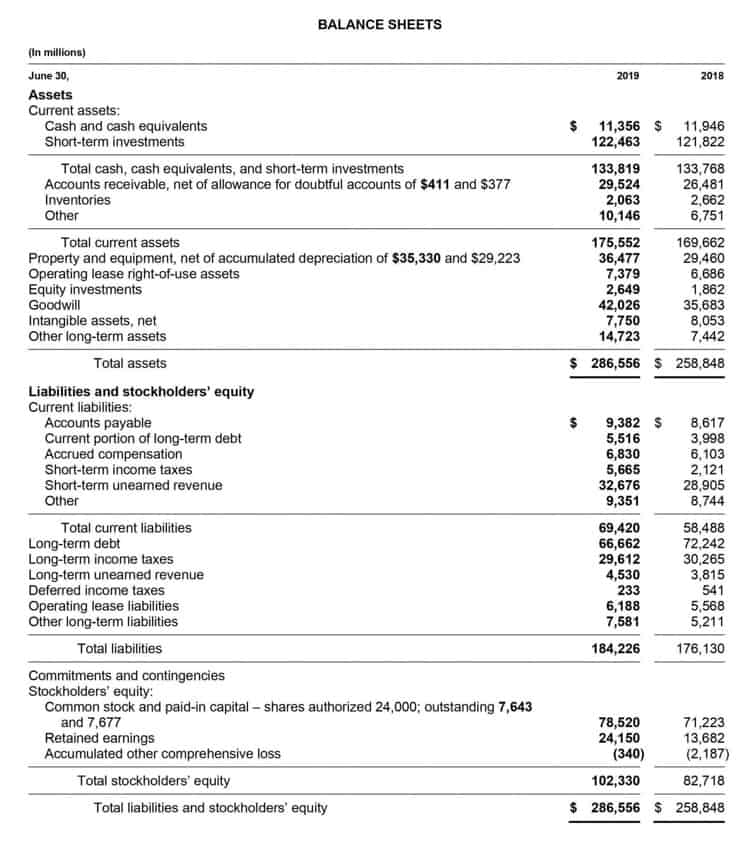Break-Even Analysis in your Case Interview

Here’s how they work for covered calls, spreads, iron condors, and straddles. Put options are the opposite of call options—you’re expecting a stock to drop, and the breakeven point tells you specifically how far the price has to fall for your trade to hold up. Another scenario where a company might have multiple break-even points is if the company operates in different geographic regions or markets, each with different costs and prices. A company may have multiple break-even points if it operates with multiple product lines or services, each with different costs and prices. The analysis shows that the competitor has an inordinately high breakeven point that allows for little profit, if any. However, there are several operating expense reductions that can trigger a steep decline in the breakeven point.
- Options traders also use the technique to figure out what price level the underlying price must be for a trade so that it expires in the money.
- Even a small change in the selling price, depending on the sales volume, can significantly lower the break-even point and increase the profit considerably.
- If a business is operating below its breakeven point, then it is continually losing money.
- There’s a lot to managing accounts and making strategic decisions for any company.
- These costs can be allocated to individual products proportionally, based on the product’s share of total sales.
What Are Some Limitations of Break-Even Analysis?
- Finally, the breakeven point can be used to determine the amount of losses that could be sustained if a business suffers a sales downturn.
- You would analyze the product’s fixed and variable costs to determine the break-even point.
- The notion can also be found in more general phenomena, such as percolation.
- Use your break-even point to determine how much you need to sell to cover costs or make a profit.
- After almost a decade of experience in public accounting, he created MyAccountingCourse.com to help people learn accounting & finance, pass the CPA exam, and start their career.
- With the contribution margin calculation, a business can determine the break-even point and where it can begin earning a profit.
By analyzing the break-even point, businesses can determine if a proposed investment or project is financially viable. These might include labor, parts and raw materials, as well as other expenses related to service delivery such as packaging and shipping or travel costs. The break-even calculation also gives management an expectation for the future. For instance, if the company broke even in July, the rest of the year’s operations would be generating pure profits. Typically, the first time you reach a break-even point means a positive turn for your business. When you break-even, you’re finally making enough to cover your operating costs.
- By effectively utilizing the break-even analysis, companies can make informed decisions that enhance their operational efficiency and profitability.
- Thus, if a project costs $1 million to undertake, it would need to generate $1 million in net profits before it breaks even.
- Identifying the break-even point is crucial for businesses as it helps set pricing strategies, make informed financial decisions, and determine when profitability begins.
- The break-even point is the volume of activity at which a company’s total revenue equals the sum of all variable and fixed costs.
- The company didn’t lose any money during the period, but it also didn’t gain any money either.
- Conversely, a price reduction will reduce the contribution margin, which increases the breakeven point.
Fund your business

If the profit threshold is reached too late or not at all, the project may not be viable, so it’s important to understand your gross and net profits and revenue targets. To find your break-even point, divide your fixed costs by your contribution margin ratio. Kramer’s Consulting does an audit of its fixed costs and realizes its executive salaries are higher than average for the industry.
Calculating Contribution Margin and BEPs

While the break-even point is a valuable metric, it does have its limitations. One disadvantage is that it assumes a linear relationship between costs and revenues. In reality, costs and revenues can be influenced by various factors, such as economies of scale, market break even point definition conditions, and competition.

What is a Sales Cycle? (Explained With Examples)

By carefully analyzing fixed and variable costs and determining the break-even point, you can develop strategies to boost revenue and minimize risk. A break-even analysis is crucial for assessing a company’s profitability. It illustrates the relationship between profit, revenue, and costs, helping to calculate the break-even point (BEP). It’s essential to understand the concept of fixed and variable costs.
Can the break-even point be used to predict future profits?
The five components of break-even analysis are fixed costs, variable costs, revenue, contribution margin, and break-even point (BEP). The break-even value is not a generic value as such and will vary dependent on the individual recording transactions business. However, it is important that each business develop a break-even point calculation, as this will enable them to see the number of units they need to sell to cover their variable costs. Each sale will also make a contribution to the payment of fixed costs as well.
Example of the Breakeven Point
In the consulting industry, a firm’s fixed costs may include office rent, salaries, and professional liability insurance, totaling $10,000 per month. The variable costs per project, including travel expenses Partnership Accounting and subcontractor fees, amount to $5,000. The contribution margin represents the revenue required to cover a business’ fixed costs and contribute to its profit.